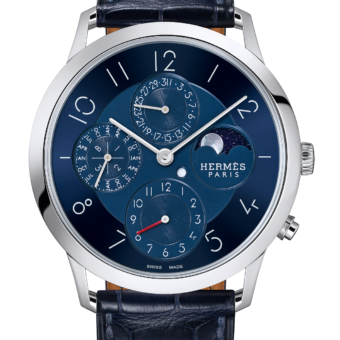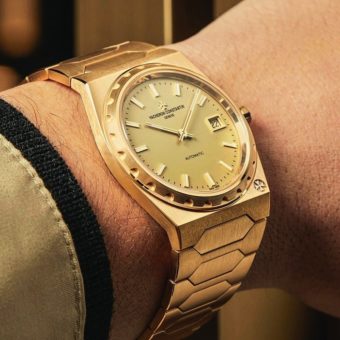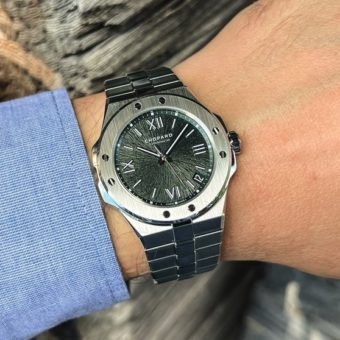A new, white-gold, black-dialed version of the Richard Lange Jumping Seconds and the first date-equipped model in the Zeitwerk collection will be among the new watches that Germany’s most prestigious luxury watchmaker, A. Lange & Söhne, will bring to the upcoming WatchTime Los Angeles event on May 3-4. Here is a closer look at both.
The Richard Lange Jumping Seconds combines two complementary mechanisms: a one-second constant force escapement and an integrated jumping seconds function that displays the precise time in crisp, one-second intervals. Designed for optimal legibility as well as topnotch timekeeping precision, the watch features a large central seconds hand that advances in exactly 60 steps per minute. A zero-reset mechanism, equipped with a multi-disk clutch, ensures quick and easy synchronization. The wearer simply pulls out the crown to send this seconds hand immediately to the zero position.
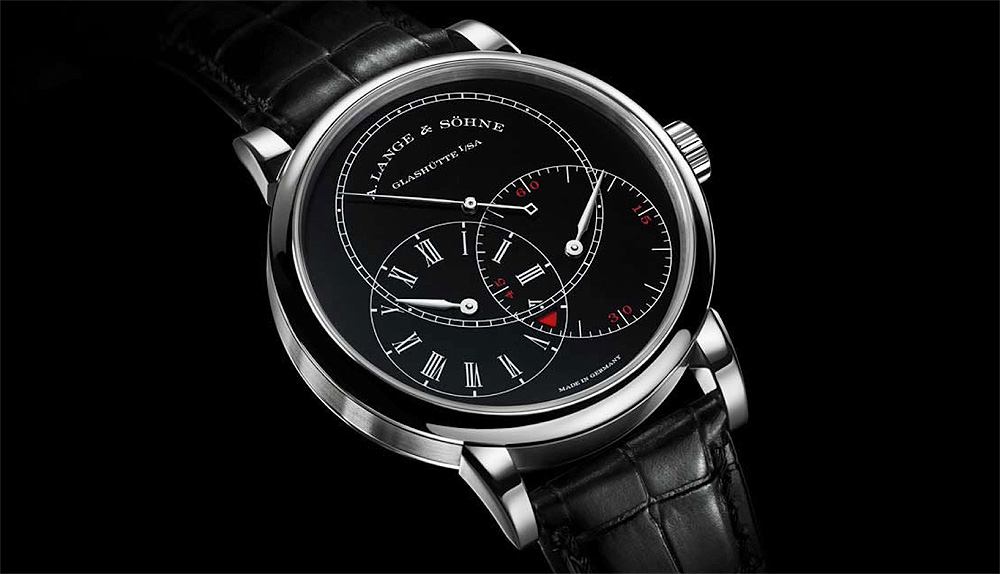
This mechanism, exceedingly rare in modern mechanical wristwatches, has its roots in classical horology: pocketwatches equipped with this function were used to determine measurements such as sidereal (solar) time and geographical longitude. Brand namesake Ferdinand Adolphe Lange developed an early version of this type of movement in 1867 and received a patent for it 10 years later. The black, regulator-style dial is made of solid silver, with overlapping subdials for hours and minutes shifted to the left and right, respectively, beneath the dominant seconds subdial. A power reserve indicator in a triangular window, inside the intersection of the hours and minutes subdial and just beneath the seconds subdial, appears at 6 o’clock. Precisely 10 hours before the watch’s movement reaches the end of its 42-hour power reserve, a red marker appears in the window, reminding the wearer to wind the watch.
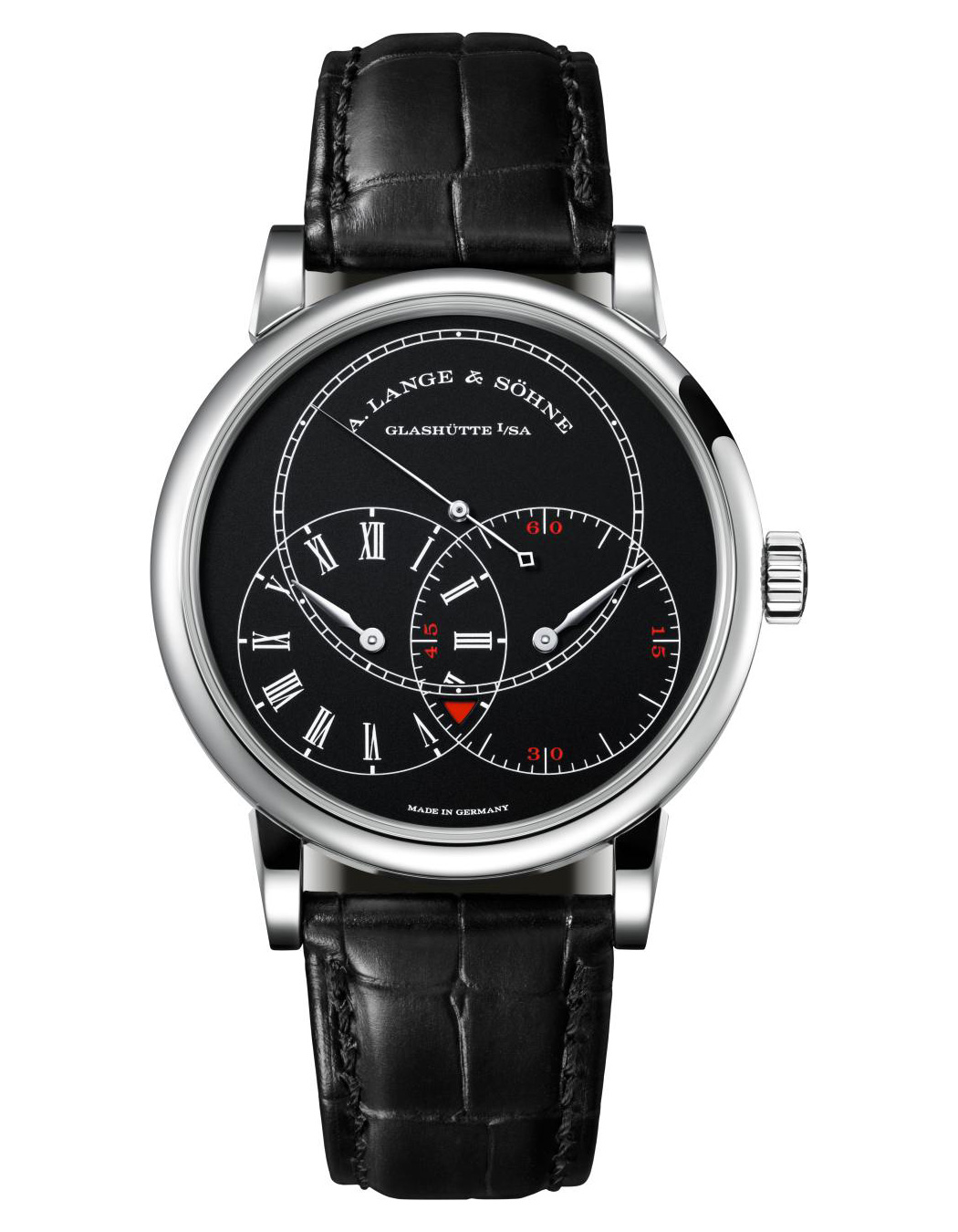
The movement, Lange’s in-house, manually wound Caliber L094.1, has an ingenious architecture that distributes constant-force generation and the seconds jump to two wheel trains, but also allows them to interact. The first wheel train, extending from the mainspring barrel to the balance, uniformly delivers energy to the escapement in one-second intervals through a constant-force device. This mechanism serves a double function, compensating for the gradually waning force of the mainspring while simultaneously offsetting possible torque fluctuations while the seconds jump is executed. The result is a constant amplitude across the entire span of the 42-hour power reserve range. The balance wheel, with eccentric poising weights, and the free-sprung balance spring, crafted in-house, contribute to a high level of rate accuracy. The second wheel train is devoted to the seconds-jump function. Powered by the mainspring barrel, it converts the balance frequency of six semi-oscillations per second into one single step of the seconds hand. As in Ferdinand Adolph Lange’s original invention, this process is controlled by a five-point star attached to the escape-wheel arbor, which rotates on its own axis, together with the escape wheel, once every five seconds. Each second, one point of the star liberates the so-called flirt — a long lever, powered by the mainspring — which then executes an instantaneous rotation through 360 degrees, after which it is halted by the next point on the star. The 360-degree rotation, transmitted by the wheel train connected to the fourth-wheel arbor, moves the seconds hand to the next full-second marker. At the same time, fresh energy is transmitted to the remontoir spring of the constant-force escapement.
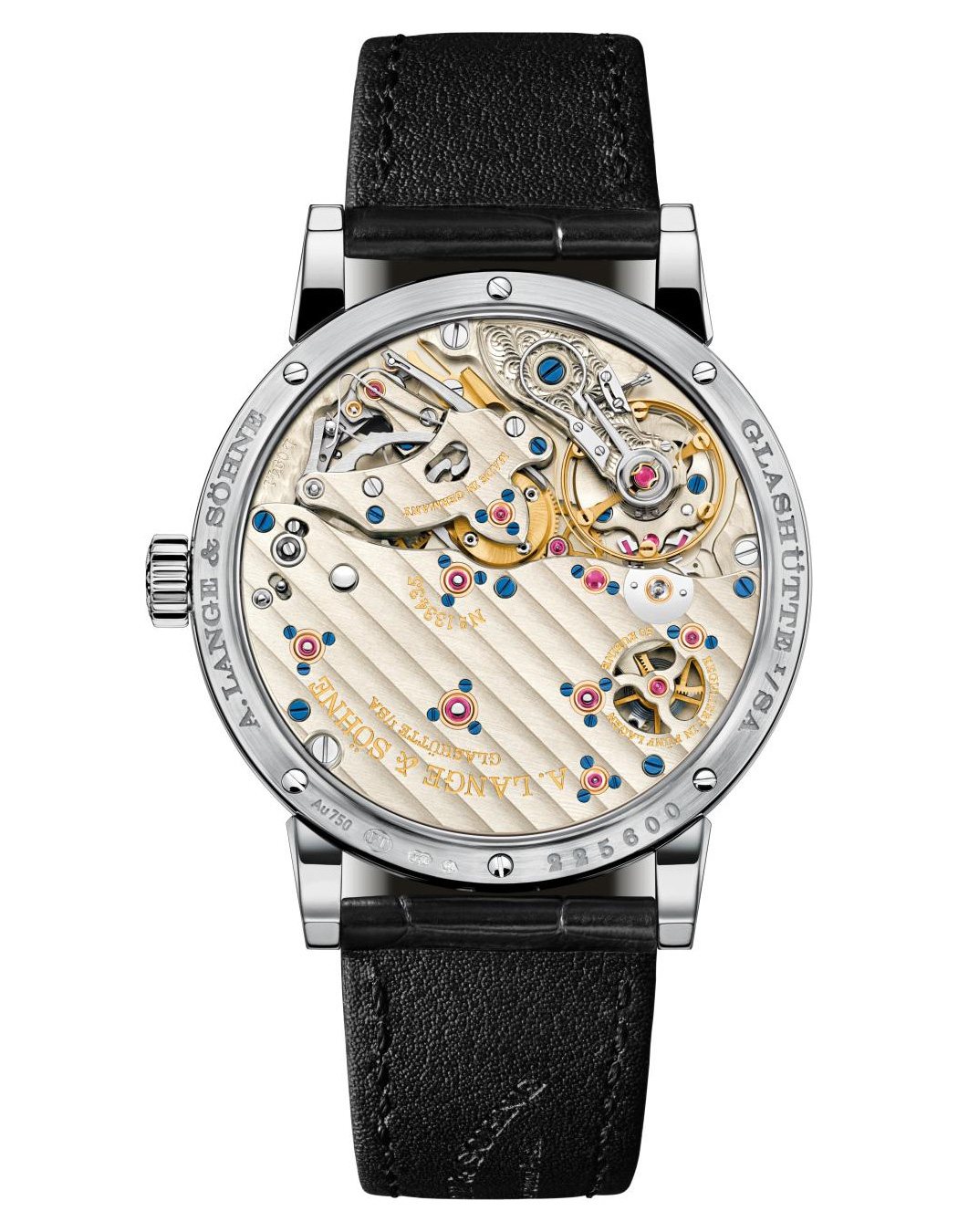
Controlling the zero-reset mechanism is a clutch on the fourth-wheel arbor consisting of three disks and a special, hand-shaped spring. The clutch disk in the middle is secured to the fourth-wheel arbor; in its closed position, the spring firmly presses the top and bottom clutch disks together, immobilizing the large seconds hand between the abrupt acceleration and deceleration cycles that occur every second in the normal operating mode. Pulling the crown activates a system of levers that block the balance with a stop spring and open the clutch, a sequence that separates the fourth-wheel arbor from the wheel train and allows almost friction-free zeroing. For this purpose, the zero-reset lever is pivoted against the heart cam, thus instantly returning the seconds hand to the 12 o’clock position. Pushing the crown back in closes the clutch and releases the balance again to re-start the movement — which consists of 390 parts and features hallmarks of traditional Glashütte watchmaking, included untreated German silver bridges, Glashütte waves, hand-engraved balance cock, and screwed gold chatons. The white-gold case is 39.9 mm in diameter and is attached to a hand-stitched alligator strap.
The Zeitwerk Date, with its all-new manufacture movement, represents the latest leap forward for the Zeitwerk collection, whose designs are inspired by the famous clock at Dresden’s Semper Opera House. Introduced in 2009, the Zeitwerk was the first mechanical wristwatch with a constant-force escapement and precisely jumping digits for the hours and minutes; it has since become firmly ensconced within Lange’s well-defined portfolio of watch families, with increasingly complicated models added over the years, including the Decimal Strike chiming watch in 2017. This model, introduced at SIHH 2019, is the first in the collection to include any type of date display, and it is a distinctive one indeed: a ring-shaped date scale made of glass, numbered 1 – 31, encircles the dial, with the current date always highlighted in red.
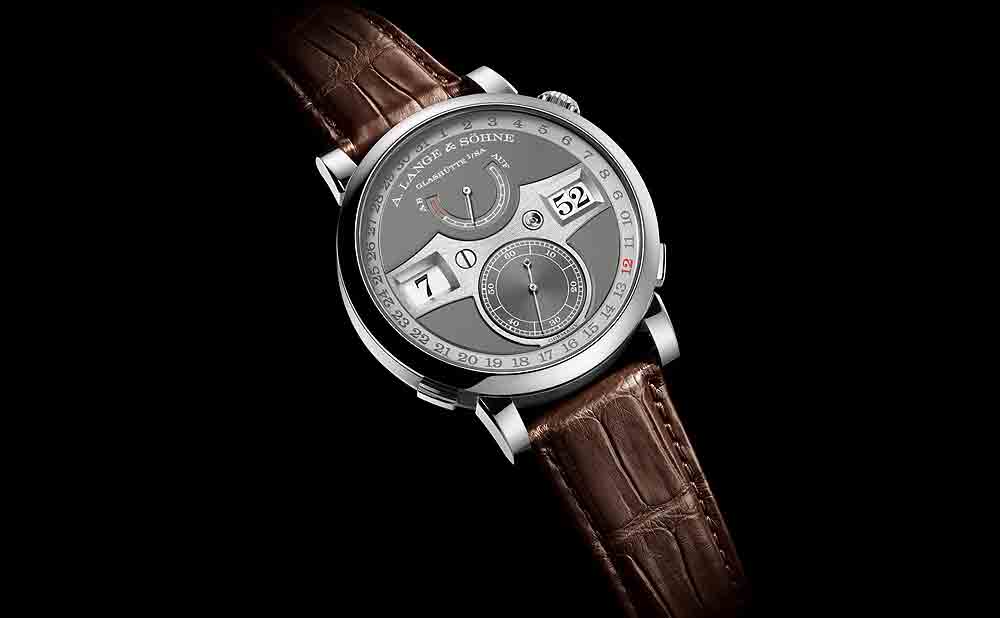
The watch’s manually wound Caliber L043.6 uses a small, red-colored segment positioned beneath the circumferential date ring with its cutout numerals, which moves one step every day precisely at midnight, making a single revolution once per month. The current date is thus always highlighted and easy to read — perhaps the next best option after Lange’s more common Outsize Date, which would have been technically impossible to incorporate into this watch. A pusher at 8 o’clock serves to correct this date indicator quickly and easily: the switching impulse is activated upon the pusher’s release. All of this works in concert with the Zeitwerk’s unconventional digital time display. Another pusher at 4 o’clock advances the hour indication separately, thus solving the issue of the wearer needing to adjust the time minute by minute via the crown whenever he wants to ensure that the watch is accurate to 24 hours (i.e., AM or PM). Lange’s watchmakers addressed this potential problem — the one that had heretofore prevented any Zeitwerk watches from adding a date — with a clutch that uncouples the hour ring from the jumping numerals mechanism when the pusher is engaged.
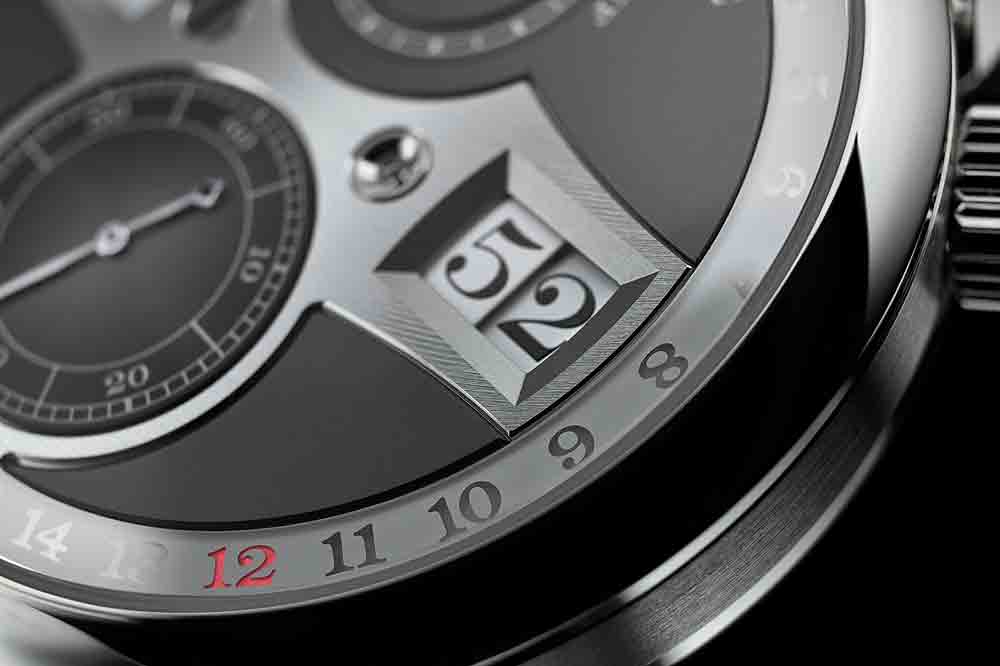
Housed inside a 44.2 mm white-gold case — under a gray dial made of solid silver, displaying small seconds in a subdial at 6 o’clock and the traditional Saxon “Auf/Ab” power reserve display at 12 o’clock in addition to the hours and minutes apertures — the newly designed Caliber L042.8 oscillates at 18,00 vph and amasses a power reserve of 72 hours when fully wound. Crafted to Lange’s meticulous standards, it features the hallmark elements the manufacture’s avid enthusiasts have come to expect — three-quarter mainplate of untreated German silver, hand-engraved balance cock, blued screws, lever escapement, shock-resistant cam-poised balance with in-house-manufactured balance spring, to name the highlights — with the entire ensemble assembled and decorated by hand. In all, the movement is comprised of 516 components, of which an astounding 70 are jewels. On the dial, the hands are made of rhodiumed gold and the “time bridge” that connects the hours to the minutes, of rhodiumed German silver. The A. Lange & Söhne Zeitwerk comes on a hand-stitched brown alligator leather strap with a white-gold pronged buckle.
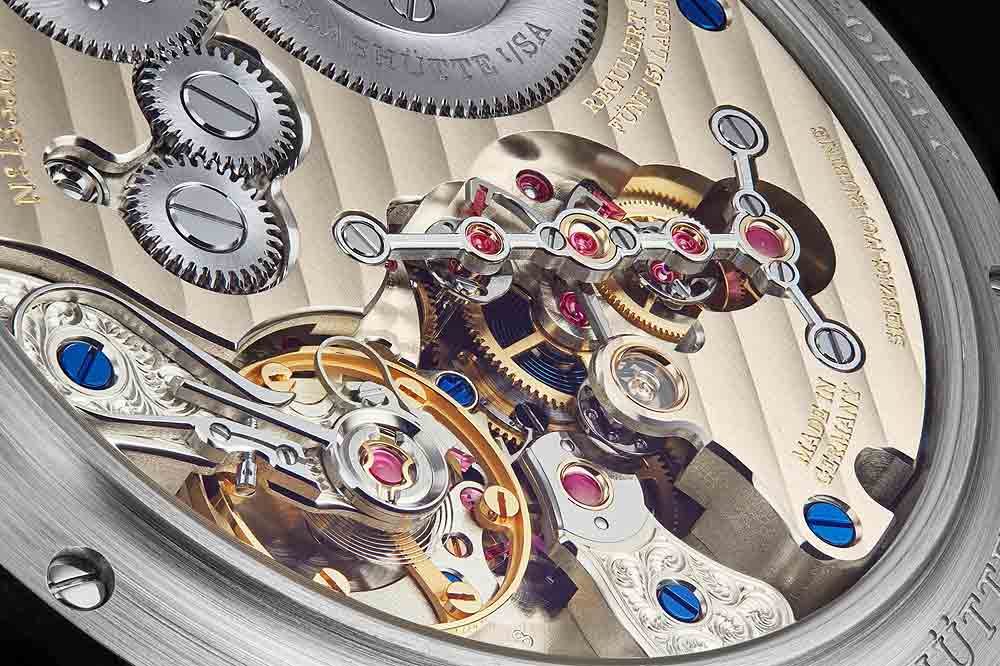
You can check out these two horological milestones from Glashütte, as well as other notable pieces from A. Lange & Söhne’s 2019 collection, along with those of 27 other luxury watch brands, at WatchTime Los Angeles. Tickets are on sale now!


